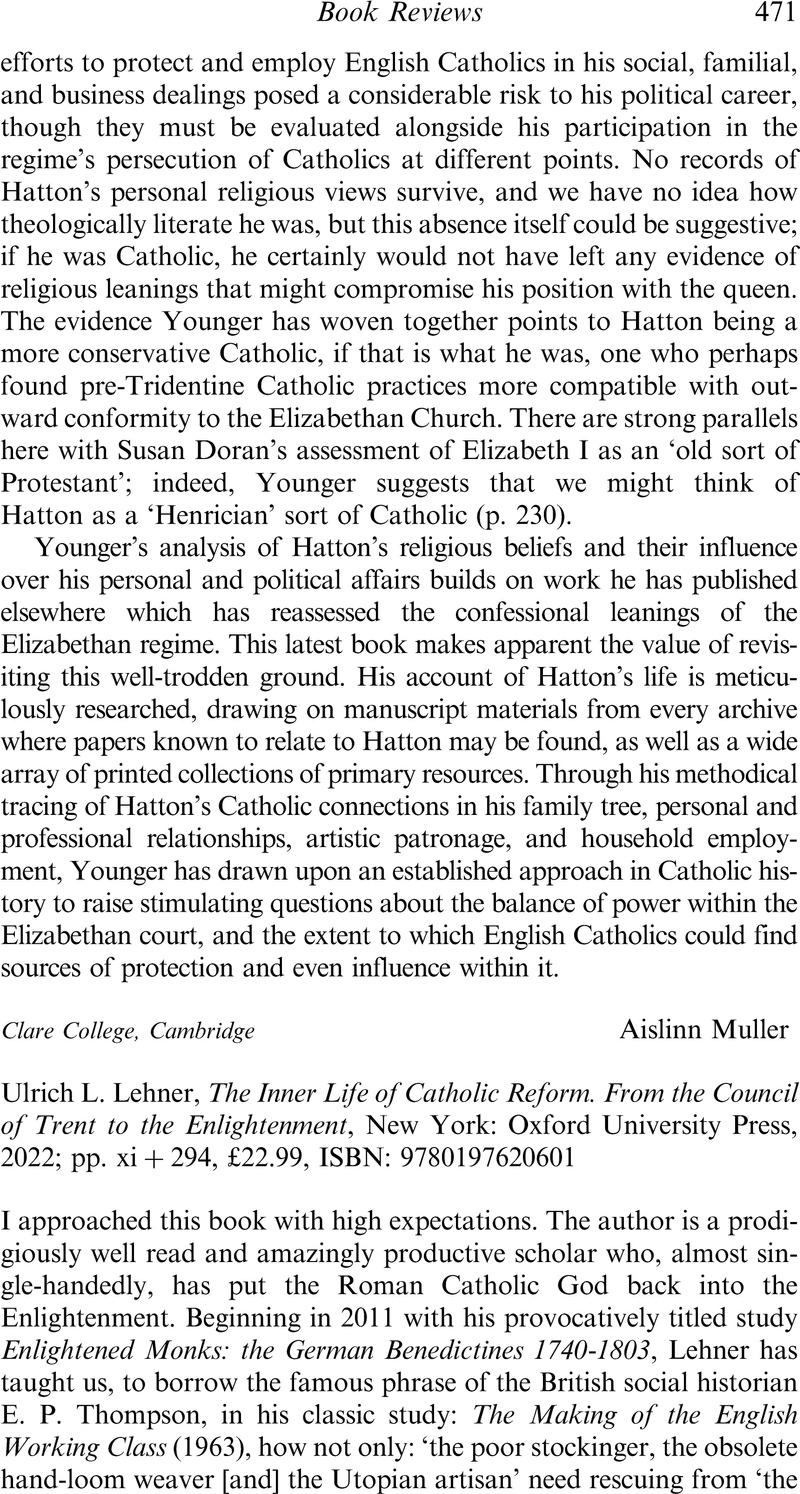No CrossRef data available.
Article contents
Ulrich L. Lehner, The Inner Life of Catholic Reform. From the Council of Trent to the Enlightenment, New York: Oxford University Press, 2022; pp. xi + 294, £22.99, ISBN: 9780197620601
Review products
Ulrich L. Lehner, The Inner Life of Catholic Reform. From the Council of Trent to the Enlightenment, New York: Oxford University Press, 2022; pp. xi + 294, £22.99, ISBN: 9780197620601
Published online by Cambridge University Press: 30 November 2023
Abstract
An abstract is not available for this content so a preview has been provided. Please use the Get access link above for information on how to access this content.

- Type
- Book Review
- Information
- Copyright
- © The Author(s), 2023. Published by Cambridge University Press on behalf of Trustees of the Catholic Record Society



